 |

|
 |
Integrating Family, Youth, and Community Preparedness With Educational Initiatives
School and Community Connection |
|
Connecting family, youth, and community preparedness to education initiatives benefits all, as it builds from existing resources and increases outcomes for the students as well as preparedness for the school and the community it serves.
|
For more information on youth, family, and community preparedness, visit the U.S. Department of Education’s Office of Safe and Supportive School’s Readiness and Emergency Management for Schools (REMS) Technical Assistance (TA) Center.
|
|
|
|
To learn more about Teen CERT, view a Webinar conducted by the REMS TA Center in collaboration with Federal Emergency Management Agency (FEMA) and the corresponding toolkit. |
|
|
| STEM and STEM-Related Initiatives | |
| Preparedness Example(s) | Programs and Resources |
Relate STEM and STEAM topics to safety skills necessary to prepare for hazards and threats. For example,
Incorporate preparedness examples in STEM and STEAM-related activities for students to provide a real-world context for traditional topics and lessons. For example, during a physics lesson, provide students with data, facts, and information from a real-world hazard or threat. Ask students to create a solution, then compare the students’ solutions with the actual response. Compare and contrast the solutions with the response to determine efficacy. |
SciJinks | U.S. Department of Commerce (DOC), National Oceanic and Atmospheric Administration (NOAA)
Web page with STEM-related resources for children, youth, and educators. Engaging Students in Emergency Management | REMS TA CenterResource outlining tips for engaging students in preparedness. SKYWARN Storm Spotter Program | DOC NOAA National Weather Service (NWS)A citizen science-based program that engages volunteers to collect and report severe weather events. Owlie’s Weather-Ready Educational Activity | DOC NOAA NWSActivities designed to ensure more families, schools, community groups, and youth organizations become weather-ready. Resources for Teachers | U.S. Geological SurveyDocuments, multimedia, lessons, and activities for educators organized by grade level ranges. |
| Curricular-Based Initiatives | |
| Preparedness Example(s) | Programs and Resources |
|
Incorporate preparedness into classroom materials and activities to provide a real-world context for the existing curriculum. A real-world context provides weight and importance to lessons and can often be transferred to CTE initiatives by involving safety partners in career awareness and workforce development activities such as career days, job shadowing, internships, and camps. Preparedness should also be considered for family and community engagement activities as it can bring awareness and education to both youth and the community.
Example Fire Prevention Week is a public observance held in early October each year. Many schools incorporate this observance into their curriculum, but it also presents an opportunity to involve the community and families. For example, schools could invite the local fire department to host their fire prevention activities at the school location. This would draw not only the students and their families to the event, but it may also draw participation from other community members. In turn, it would increase awareness and preparedness of the students, families, and the community. |
Youth Emergency Preparedness Curriculum — Ready Kids | U.S. Department of Homeland Security (DHS), FEMA
Downloadable emergency preparedness curriculum for grades 1-12 teaches kids what to do before, during, and after an emergency, while fostering critical 21st-century skills such as problem-solving, teamwork, creativity, leadership, and communication. Ready Kids | DHS FEMAWeb page with various resources for kids, teens, families, educators, and organizations, all organized by age group. Student Tools for Emergency Planning (STEP) | DHS FEMAThe newly updated STEP is a modular emergency preparedness curriculum with fun activities for use in many different settings, inside and outside of school. Earth & Environment Classroom Resources | National Science FoundationNumerous resources addressing the many topics comprised within school safety, security, emergency management, and preparedness. |
| Extracurricular-Based Initiatives | |
| Preparedness Example(s) | Programs and Resources |
|
Explore integrating youth preparedness into extracurricular activities such as afterschool programs, clubs, and sports. These environments are ideal for learning skills such as teamwork, decision-making, resiliency, and the building and maintaining of partnerships, all skills applicable to preparedness. Extracurricular activities also allow students to get involved in planning for emergencies outside the school day and a chance to coordinate with other organizations.
Example Schools could invite community partners to host a Teen CERT program during the school’s afterschool program. This would benefit the community partner by increasing the pool of educated and trained community members and benefit the students by providing them with training that would lead to increased preparedness and possibly further training or even a career. It would also provide an opportunity for students to interact and collaborate with other extracurricular and community programs, helping to expand both their circle of influence and the community’s preparedness while teaching them important soft skills. |
Working With the Whole Community to Manage Emergency Incidents That May Impact Education Agencies | REMS TA Center
Web page that includes resources from the REMS TA Center, U.S. Department of Education (ED), and Federal agency partners, for education agencies working with the whole community to manage emergency incidents that may impact education agencies. Planning for Emergency Incidents That Can Happen in All Settings and During All Times | REMS TA CenterWeb page that includes resources from the REMS TA Center, ED, and Federal agency partners for planning for all settings and times that emergency incidents might occur within school environments. Emergency Management Planning for After-School Programs | REMS TA CenterResource outlining best practices, tips, and lessons learned from Napa County Office of Education regarding emergency management planning for afterschool programs. |
|
|
 |
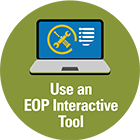 |
 |
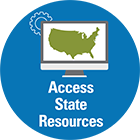 |
 |
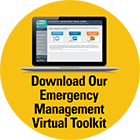 |
 |
If you have any questions or need additional assistance, |
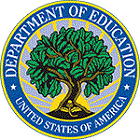 |
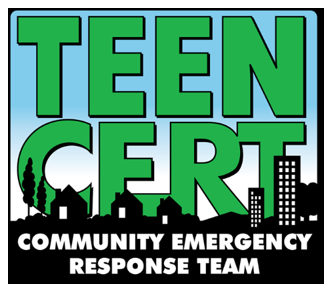 These initiatives are typically based on the needs of the local community and are interconnected. When schools and communities combine and extend their shared resources to address these initiatives, they collaboratively raise awareness and promote opportunities to address gaps and strengthen outcomes.
These initiatives are typically based on the needs of the local community and are interconnected. When schools and communities combine and extend their shared resources to address these initiatives, they collaboratively raise awareness and promote opportunities to address gaps and strengthen outcomes.